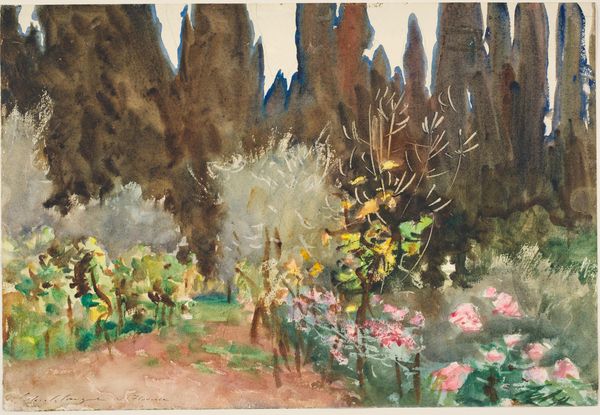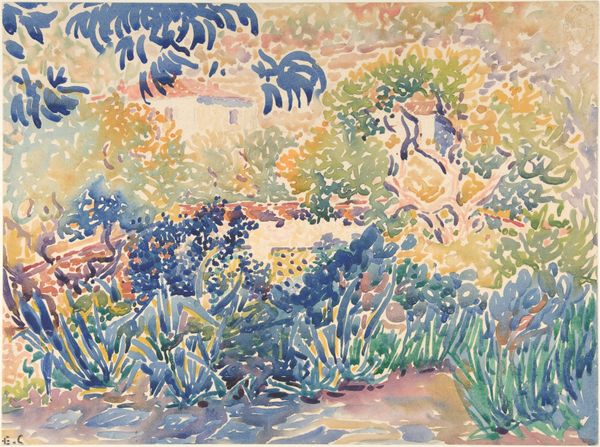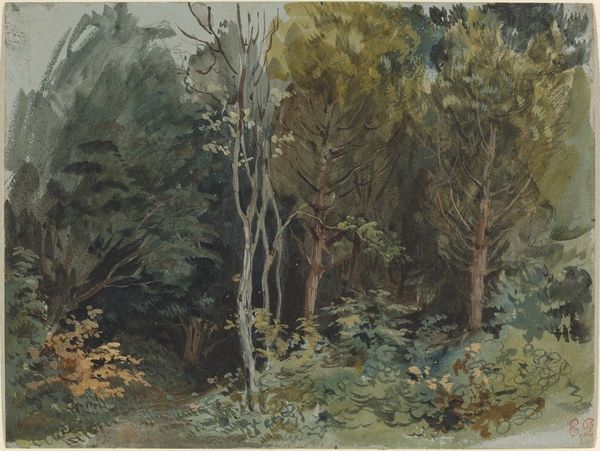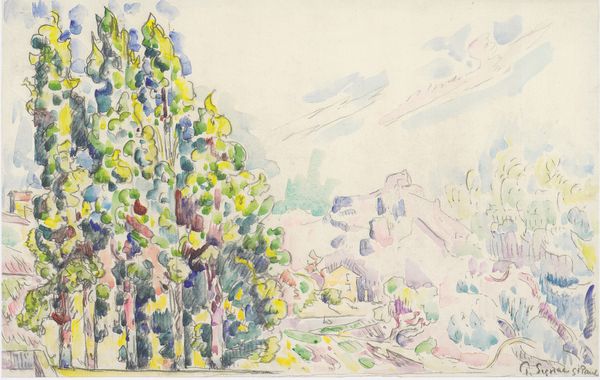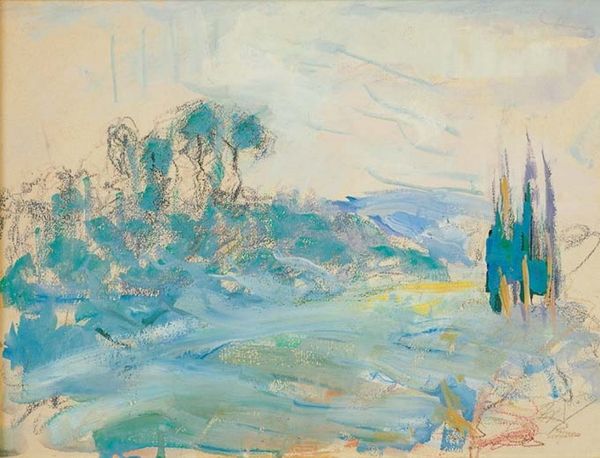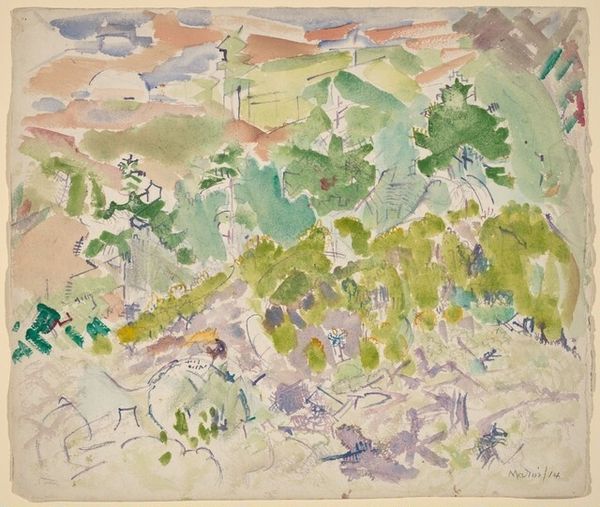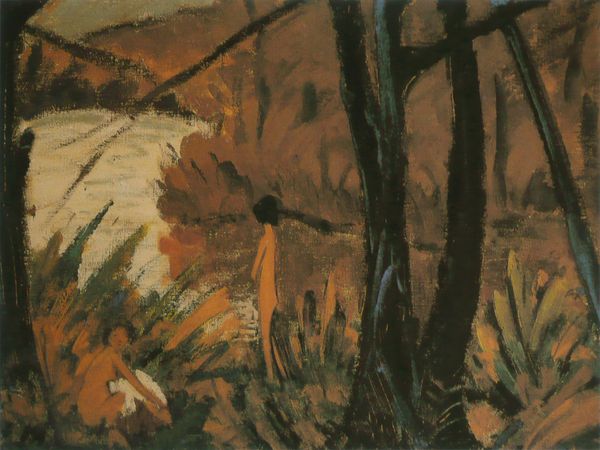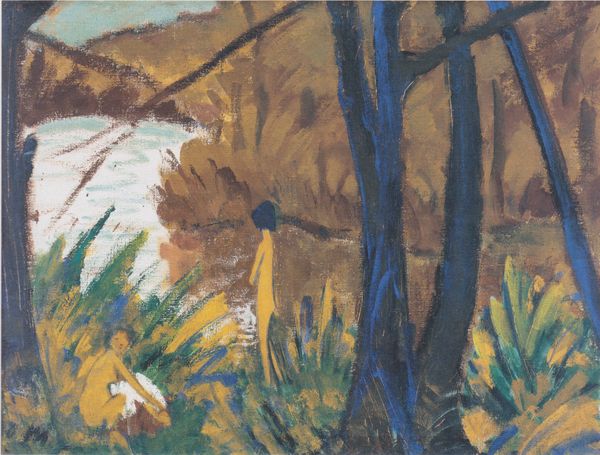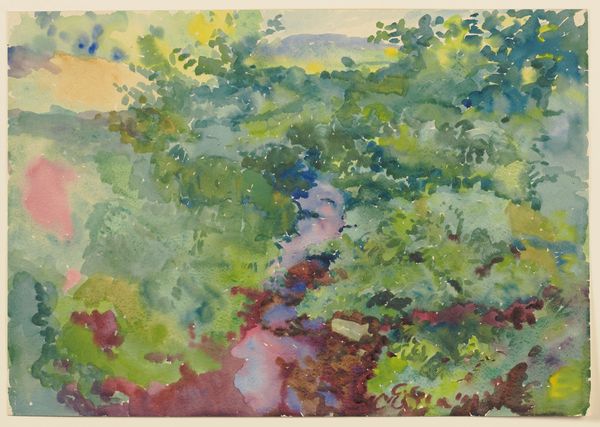
Copyright: Public Domain: Artvee
Curator: This is John Singer Sargent's "Gardens at Florence," dating to around 1910. He captured the scene in watercolor. It’s a wonderful example of his impressionistic landscape work. Editor: My first impression is one of filtered light and dappled shadows. The composition almost feels overgrown, but there's a definite serenity. You can sense the artist working outdoors in real time, observing light changing quickly on organic material. Curator: Absolutely, it exudes that plein-air feeling, the immediacy of capturing a fleeting moment in nature. Sargent, though known for his portraits, was quite taken by landscapes, particularly during his travels. This painting offers a glimpse into the leisured spaces available to a painter like Sargent, spaces supported by extensive artistic labor. What kind of materials would have been involved here, and who was preparing the paper for him? How might that dynamic shaped the painterly results on display here? Editor: A good question, which could easily go unexplored. The watercolor on paper technique creates an interesting contrast. Watercolor as a medium historically connects to sketching and early industrial design techniques, like fabric samples. And paper is of course a resource produced through deforestation and labor in pulp mills, reflecting the transformation of nature. Its scale and light suggest that Sargent might have had it in his kit or that his valet was responsible for preparing it on the spot.. Curator: And Florence as a setting also adds a layer of complexity. Consider the history of Florence as the cradle of the Renaissance, a period of profound shifts in power and patronage in art. To what extent did Sargent see himself in conversation with artists like Botticelli or Michelangelo, and to what extent was he participating in an appropriative vision of that legacy. How might a painter's social class play into how these artistic materials get consumed? Editor: The materials clearly align with capturing light, shadow, and movement. There are also layers to understanding watercolor: it is simultaneously industrial and painterly, reflecting how a material history can unlock narratives around wealth, production, and value. I believe understanding the composition and materials more fully is helpful. Curator: Yes, it enriches our understanding to think about landscape not just as picturesque view but a repository of social and material processes. Thank you, I will be taking a very different view now of how nature, society, class and power can become entangled through painting techniques.
Comments
No comments
Be the first to comment and join the conversation on the ultimate creative platform.
